An early pipe from Niger
Author:
Don Duco
Original Title:
Een vroege pijp uit Burkina Faso
Publication Year:
1998
Publisher:
Pijpenkabinet Foundation
Description:
Article on a traditional red terra cotta tobacco pipe bowl found in Burkina Faso.
The dating of smoking pipes and particularly the development of styles on the African continent are largely unknown. When Neander published Tabacologia in 1626 smoking in Europe had only passed its infancy, so it is remarkable that Neander illustrated completely developed water pipes (note 1). From this, it can be concluded that the phenomenon of smoking in Africa might be older than in Europe.
The development of the African pipe is a neglected field of study. We have some well dated finds, but a chronology such as that for European clay pipes do not exist for Africa (note 1). Therefore, every new piece of information added to the historic puzzle is important. The pipe illustrated here (Fig. 1-6) adds new information but also leaves us with questions.
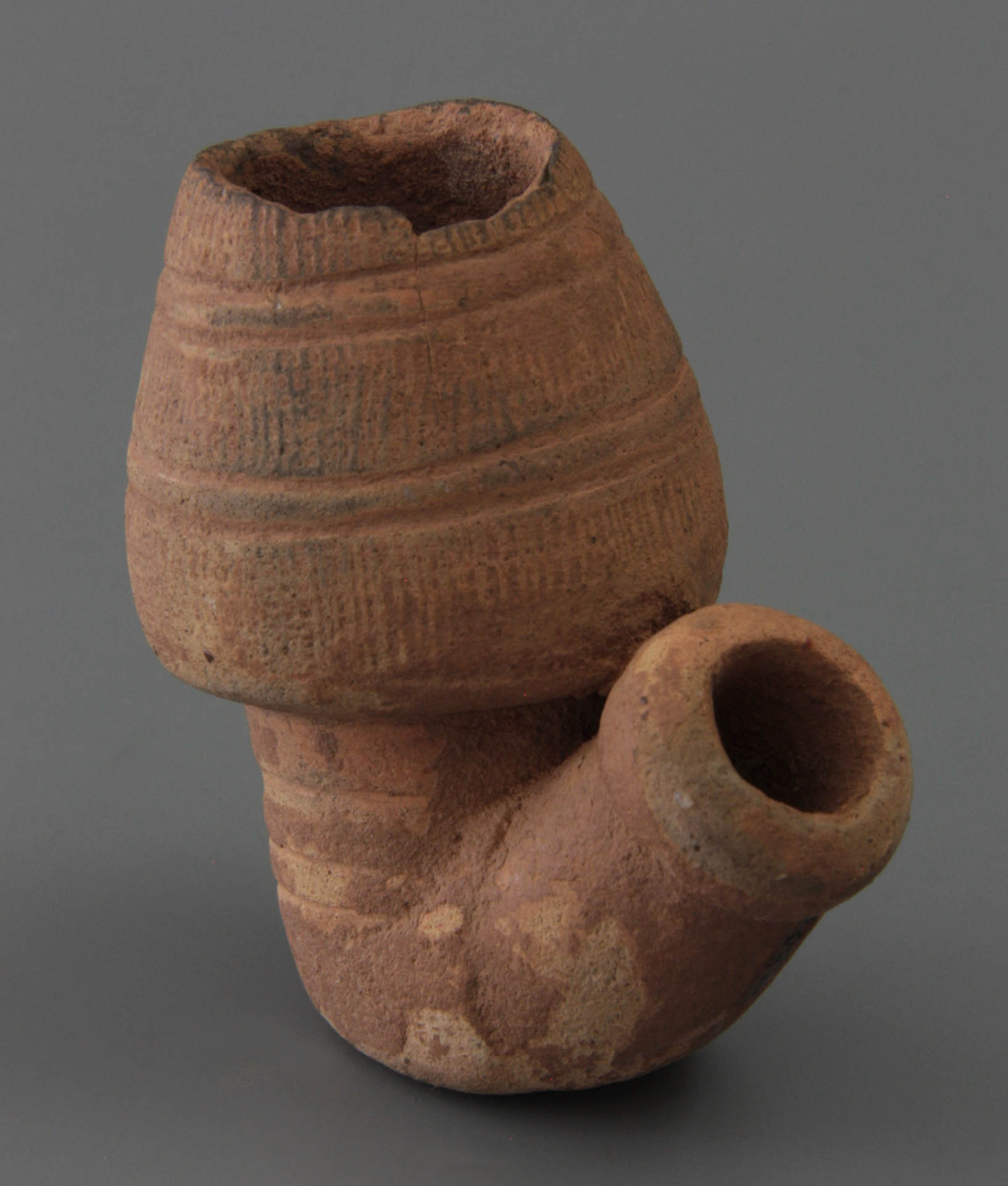
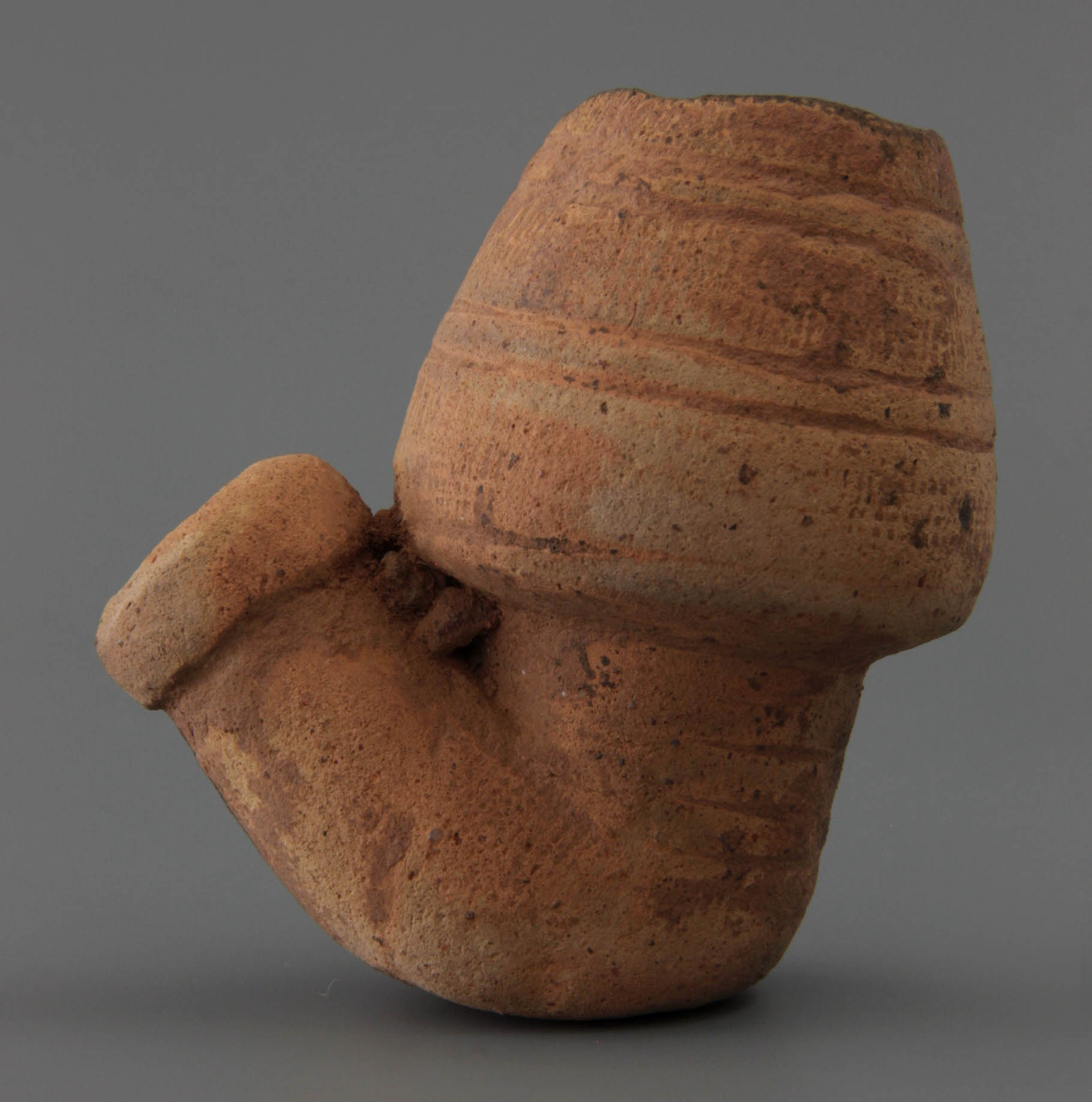
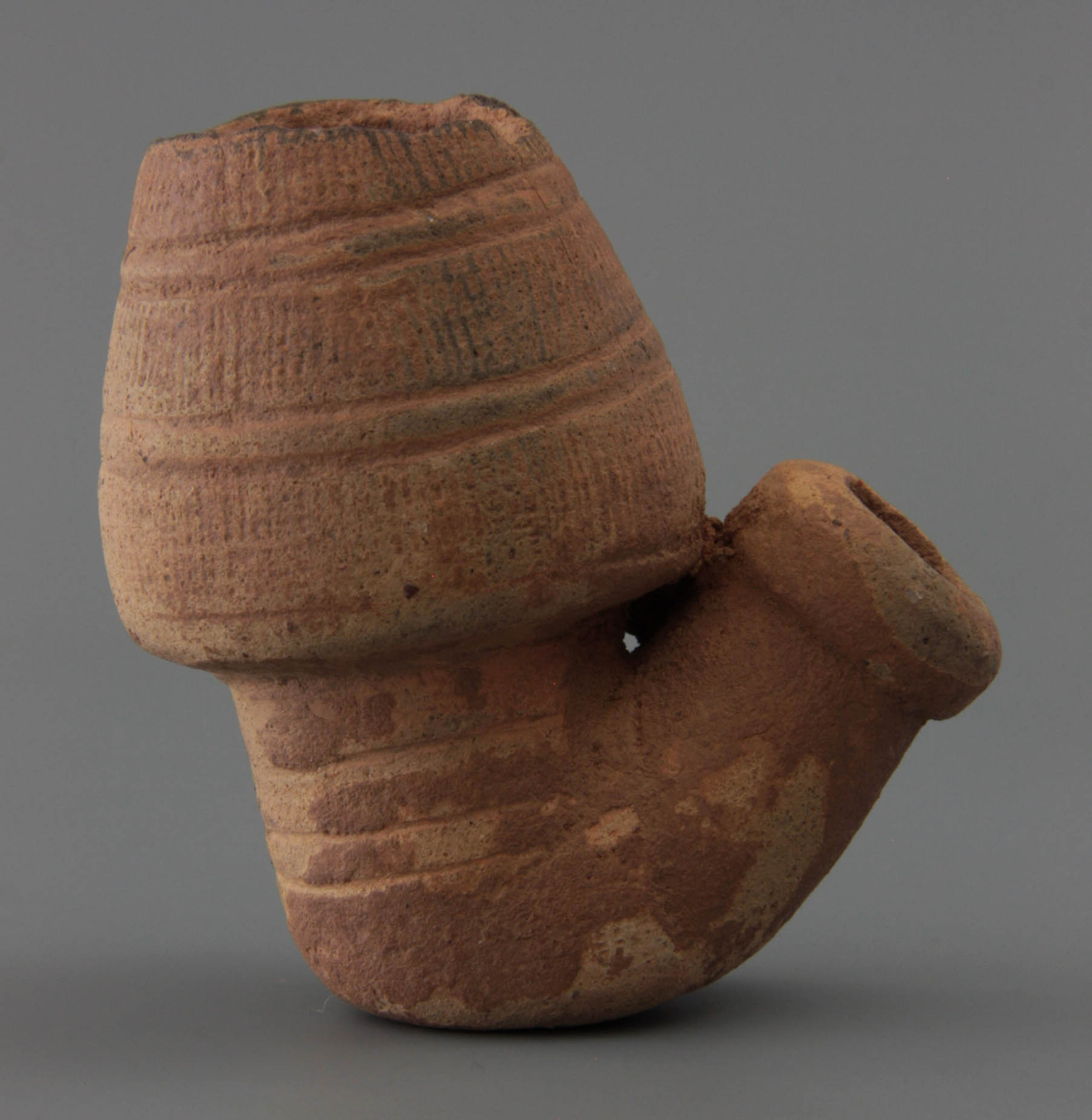
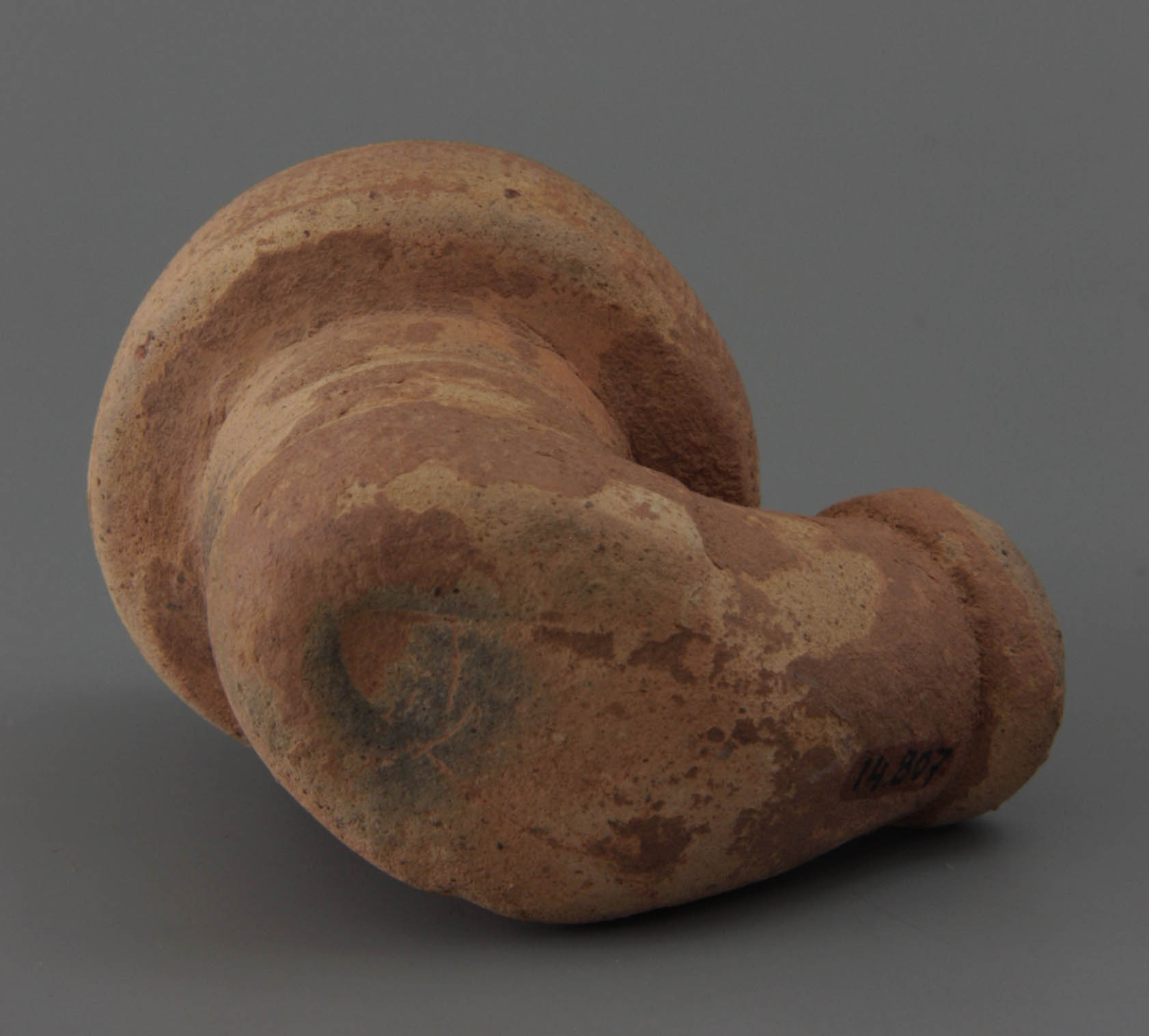
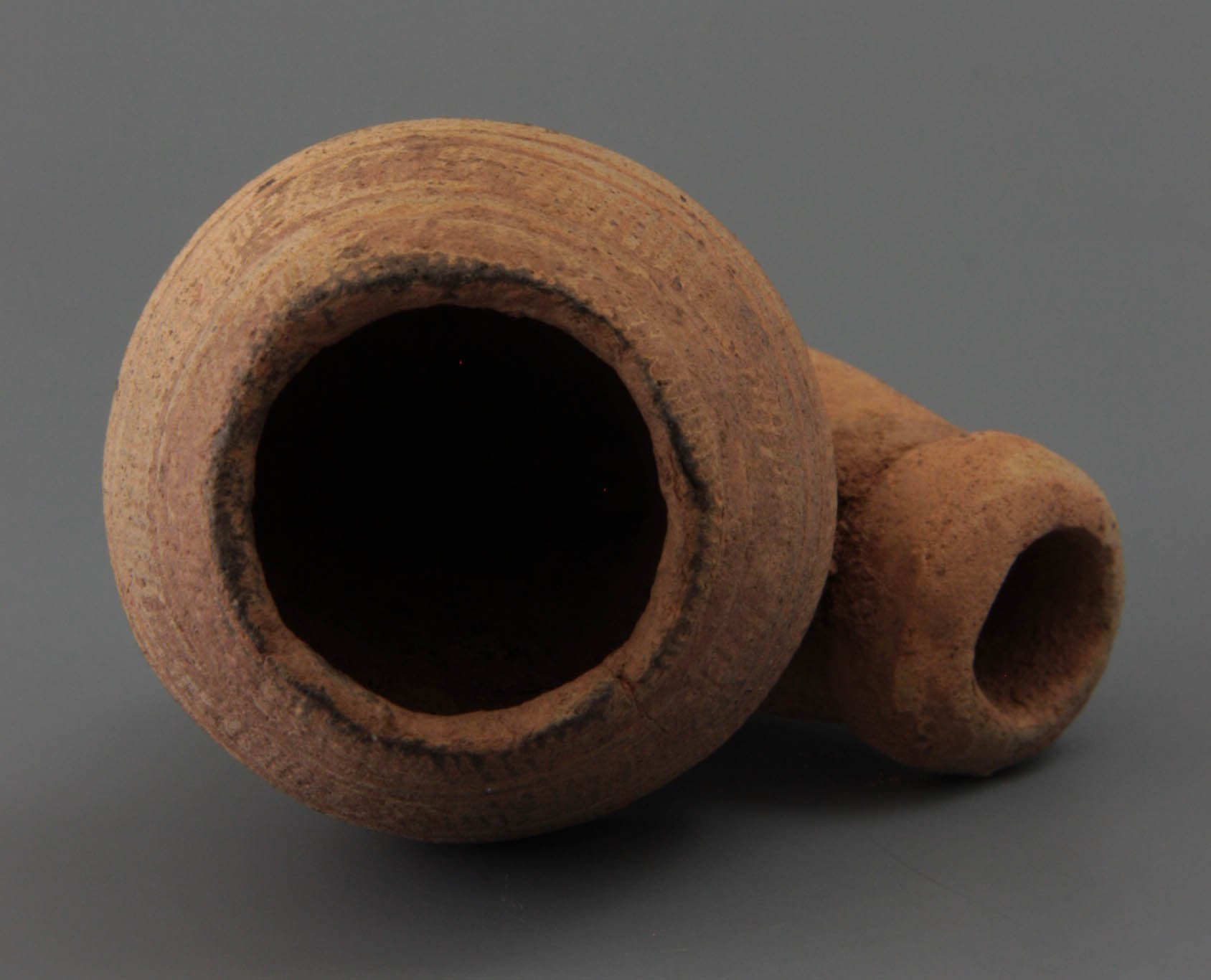
The pipe was found in the city of Poura in Burkina Faso, together with terracotta sculptures, all dating between 1500 and 1700. The raw material and the production technique of the finds show a close resemblance, particularly the brown-red pottery with a rough structure, possibly from the riverbanks. The potters moulded the pipes by hand, and after drying the pipes were fired in a field-kiln at a low temperature.
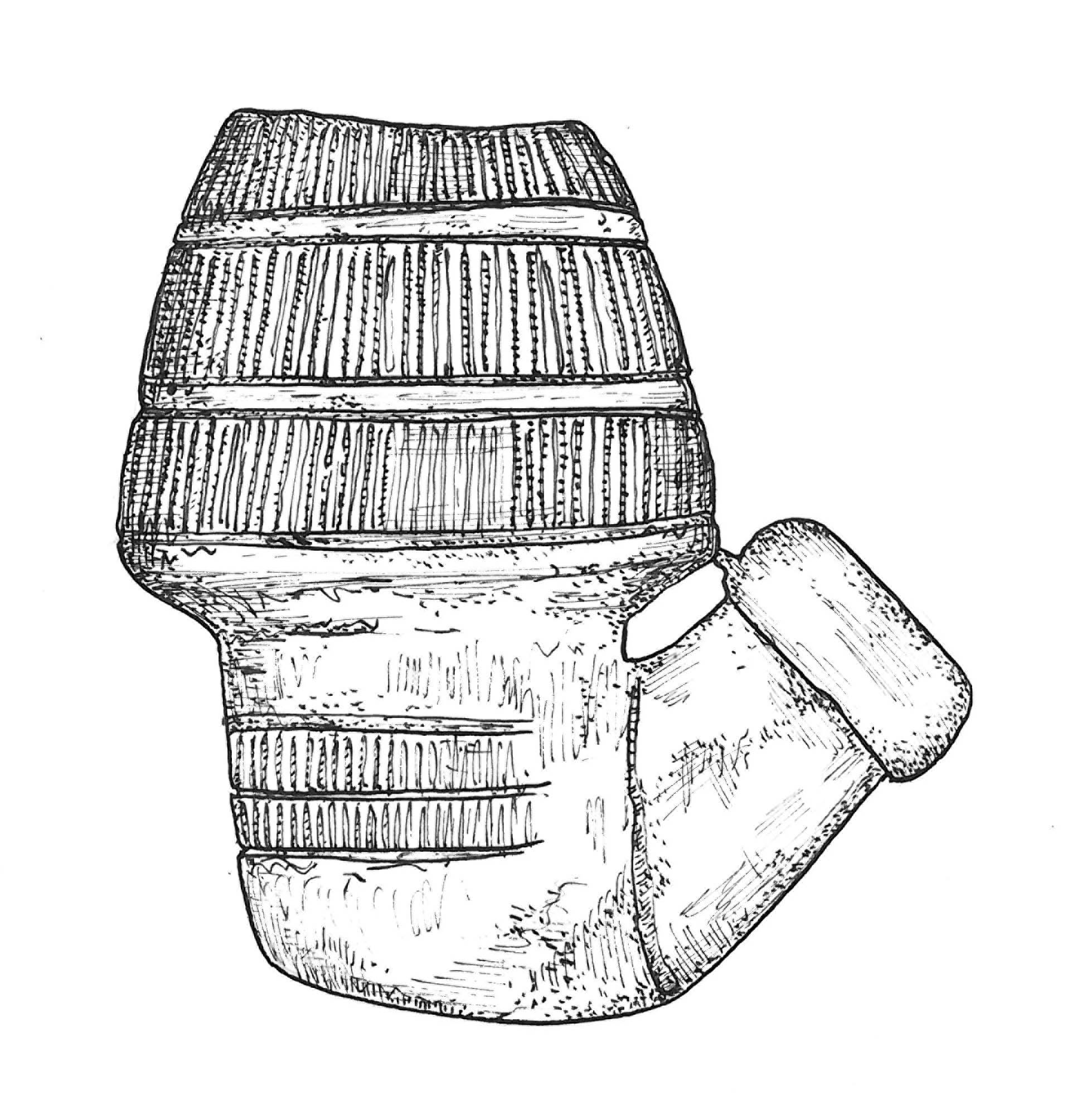
The illustrated pipe has various characteristics that suggest a pipe production over a long period. The shape is of a developed design, similar to that of a mushroom. The lower part is cylindrical, and is crowned by a funnel-shaped top that completes the mushroom silhouette. The bowl and the narrow part of the base are decorated with layers of vertical hatching. The fragile quality of the local clay makes it impossible to give the pipe a full clay stem – it would make the pipe too vulnerable. Truncating the stem and placing a ‘cuff’ round the end for the insertion of a wooden, reed of bamboo stem solves this general problem.
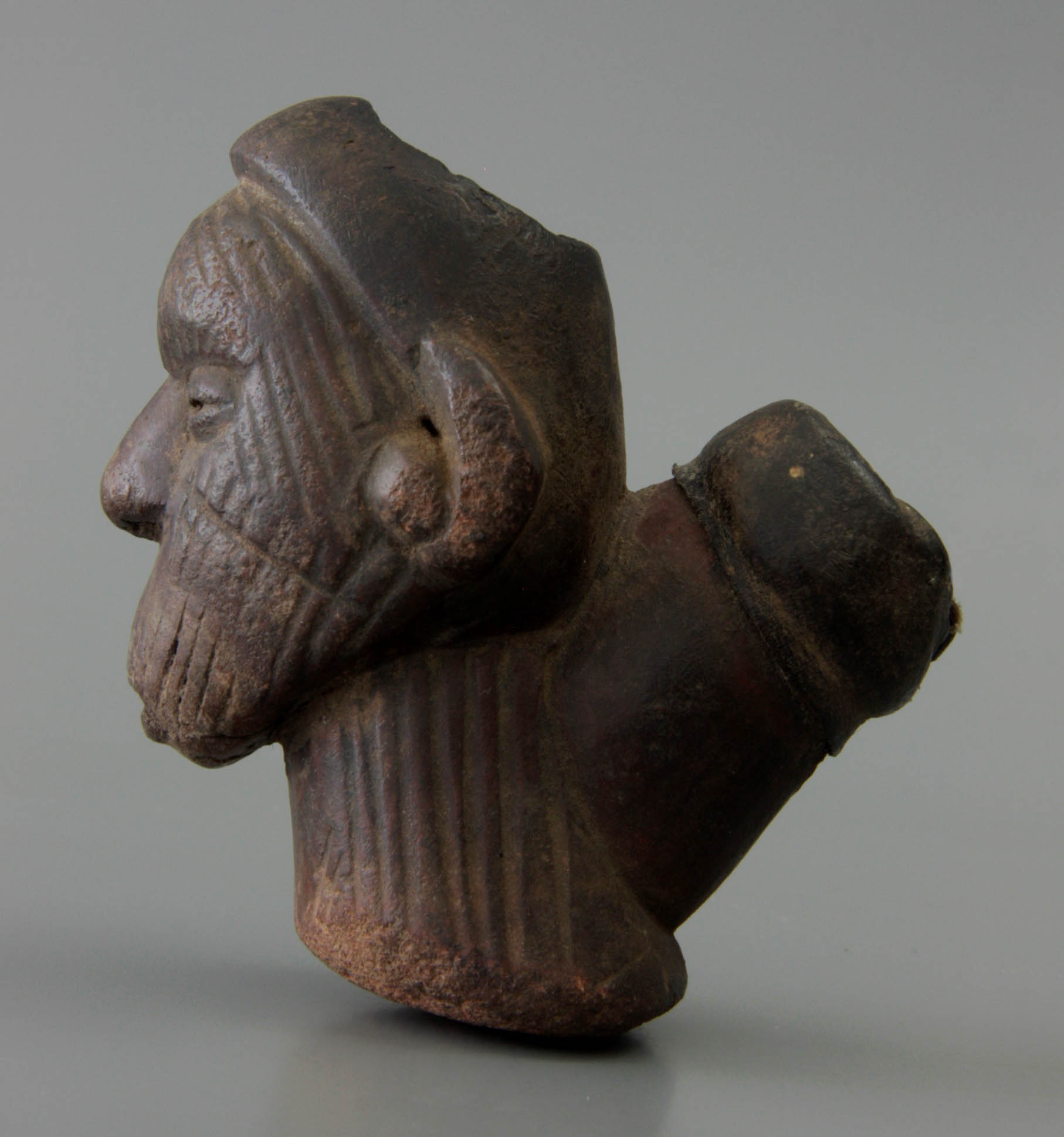
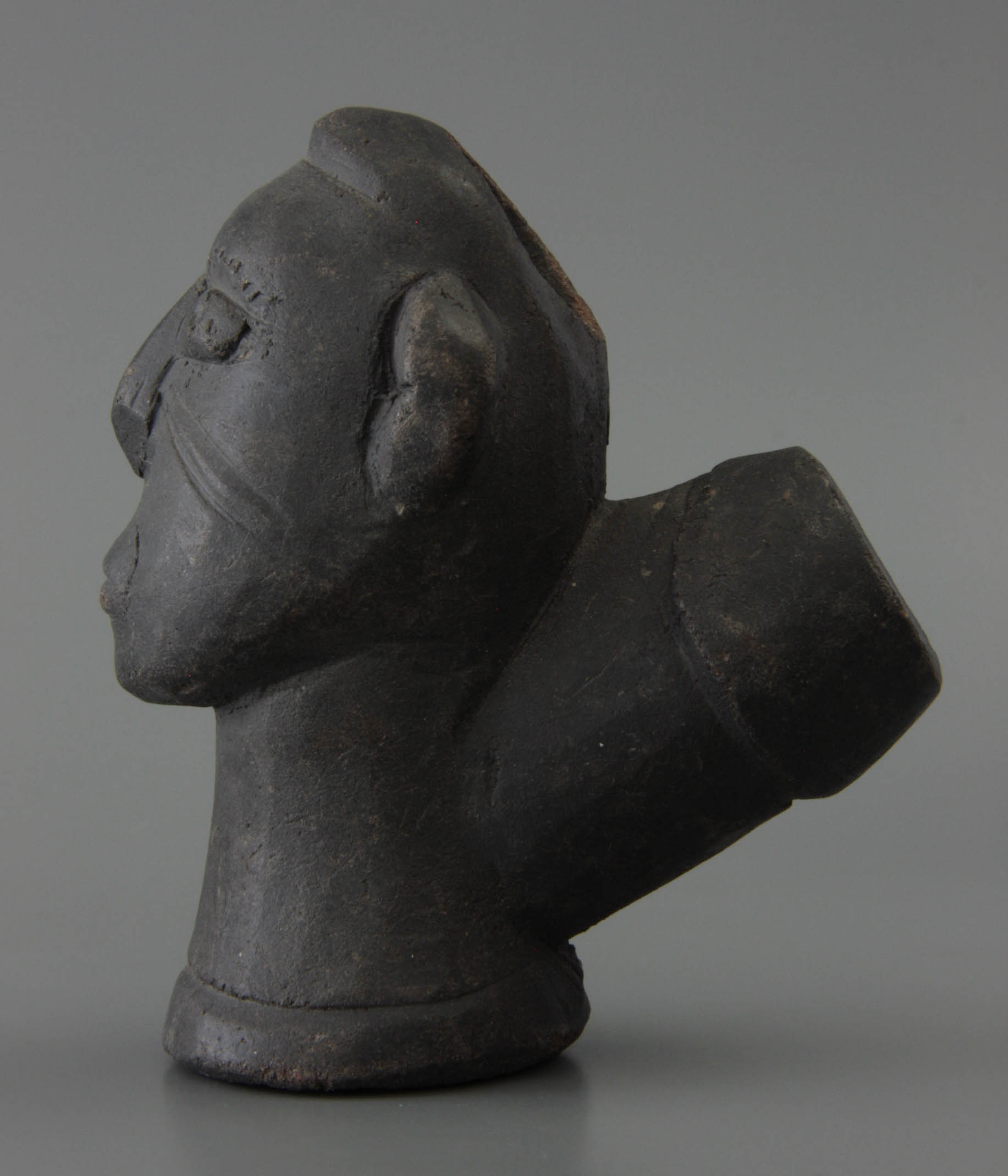
If the fragile bowl is not properly fixed to a separate stem the bowl could slip off and break. A rope or string is fixed on one side of the stem and the other end is below the broad part of the bowl stem which makes it more secure. The separate stems of these pipes were long, and when in use the smoker sat down and the bowl rested on the floor just in front of him. The bowl often scraped over the rough floor and the base got worn. This kind of wear can be seen on many present-day pipes from West African regions - the extend of the wear reflects the intensity of use (Fig. 7-8) (note 3).
It is unclear from what type of pipe this illustrated bowl derived – the shape is not the archetype of subsequent African pipes. The period during which this type was popular is unknown. The dating of the site between 1500 and 1700 is, by European standards, astonishing; we would not expect a pipe of such a development type that early. It is known that hemp was smoked in pipes in the region, but the difference between smoking one and another herb does not change the development of the pipe.
The pipe from Poura shows a product made by hand in the local ceramic tradition, in a well developed style. The design is between that of a water pipe bowl and a dry-smoking pipe. Whether tobacco or hemp was used is uncertain, and this makes a date pre-1600 not unlikely. Even though this find is only a pin-prick on the African map, its local style is worth comment and illustration.
Published as: ‘An early pipe from Niger’, Society for Clay Pipe Research, Newsletter, 54, 1998, pp 56-58.
© Don Duco, Pijpenkabinet Foundation, Amsterdam – the Netherlands, 1998.
Illustrations
1. Tobacco pipe of clay with conical bowl on a slender cylindrical base, flat bottom and up going stem with stub. Bowl and base decorated with vertical lines. Found in Poura, Burkina Faso, 1800-1900.
Amsterdam, Pijpenkabinet collections Pk 14.807
2. View from the right side.
3. View from the left side.
4. Bottom of the pipe bowl.
5. Top view of the pipe bowl.
6. Drawing of the same clay pipe bowl from Poura showing the mushroom shape.
7. Similar pipe shape but figurative. Ghana, Gurunsi, 1880-1930.
Amsterdam, Pijpenkabinet collection Pk 12.409
8. Similar pipe shape but figurative. Ghana, Frafra, 1960-1990.
Amsterdam, Pijpenkabinet collection Pk 14.332
Notes
1. Jean Neander, Traicté dv tabac ov nicotiane, panacée, petvn: autrement Herbe à la Reyne, Barthélemy Vincent, Lyon, 1626, p 338.
2. Iain C. Walker, 'The potential Use of European Clay Tobacco Pipes in West African Archaeological Research', West African Journal of Archaeology, 1975, p 165-193
3. Amsterdam, Pijpenkabinet collections Pk 12.409 and 14.332.